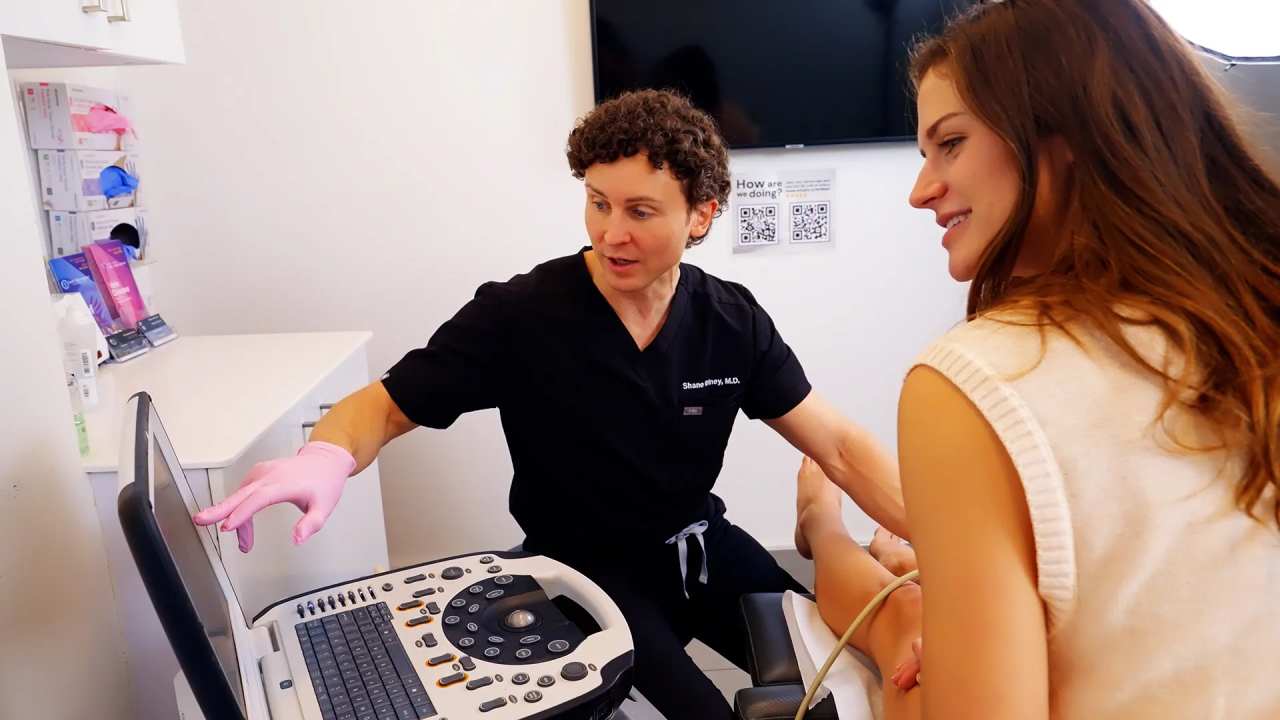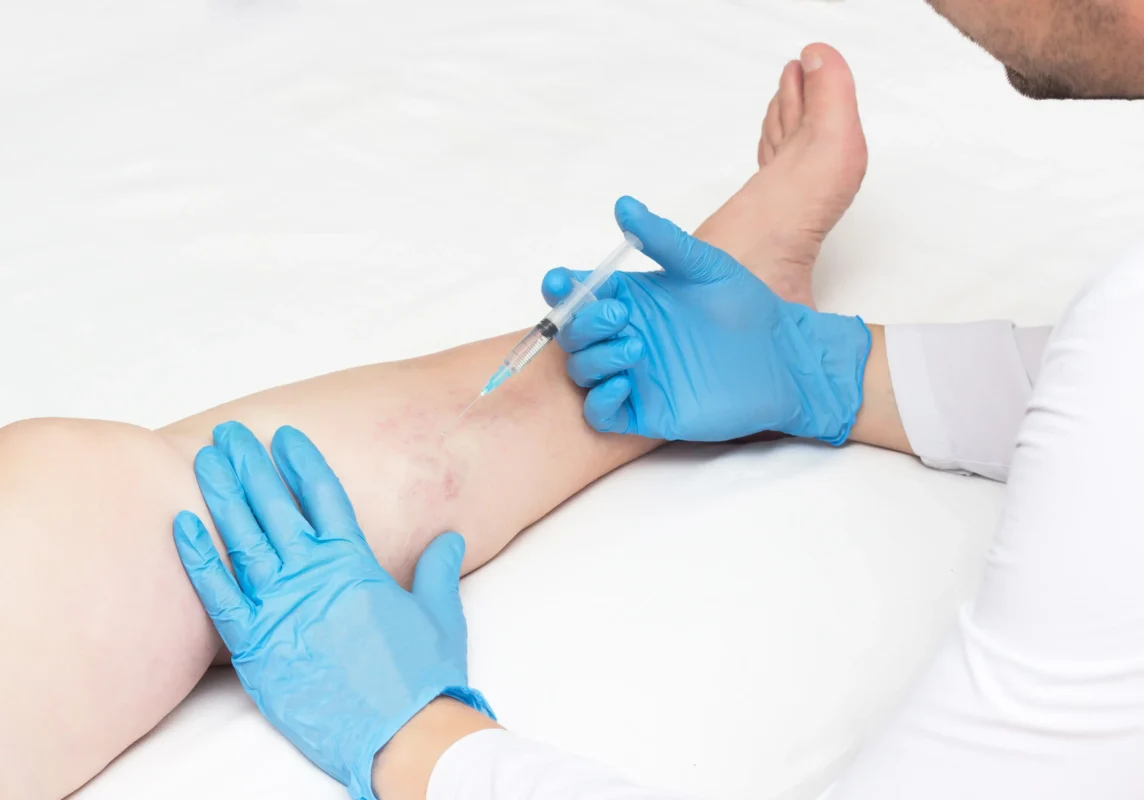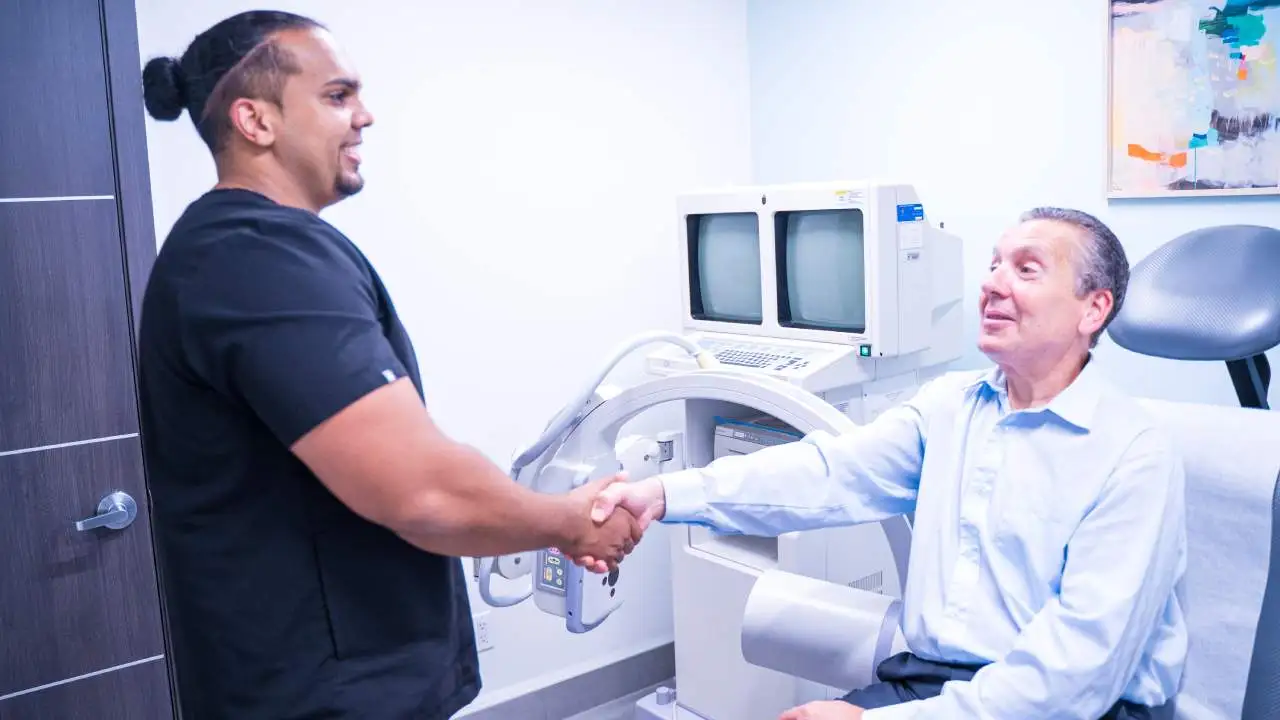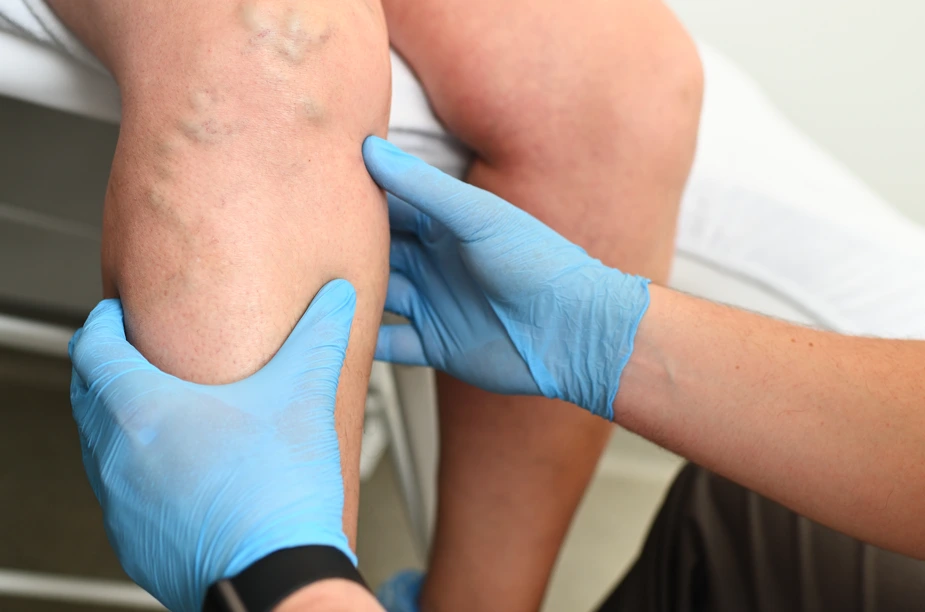Have you been dealing with the discomfort of varicose veins—those swollen, twisted veins that often appear on your legs? You’ve probably noticed aching, heaviness, or even a throbbing sensation that can get worse after standing or sitting for long periods. The pain and visual appearance of these veins can leave you feeling self-conscious. For many, varicose veins are more than just a cosmetic concern—they can be a source of physical distress.
If you’re considering varicose vein removal, you’re probably wondering what to expect during the procedure, particularly when it comes to pain. At Vein Treatment Clinic, we understand the importance of choosing the best treatment for varicose veins that addresses your symptoms and minimizes discomfort. Our board-certified vein doctors specialize in minimally invasive varicose vein treatments that are both effective and from which it is easy to recover. Let’s dive into our different treatments and explore how painful varicose vein removal truly is.
Sclerotherapy
Sclerotherapy is one of the most common varicose veins treatments and is known for being minimally invasive. During this treatment, a special solution is injected directly into the affected veins. The solution causes the veins to collapse and eventually fade from view. It is an ideal option for smaller varicose veins and spider veins, and it leaves no scarring.
How painful is sclerotherapy?
Most patients report minimal discomfort during spider vein removal. The sensation of the injection is often compared to a mild sting or a pinprick, which usually fades after a few seconds. There is no need for anesthesia, and any mild discomfort typically dissipates quickly after the treatment. Post-treatment soreness is common, but it is usually manageable with pain relievers.
Endovenous Laser Ablation (EVLA)
EVLA uses laser energy to treat larger varicose veins. During the treatment, a small fiber is inserted into the vein, and laser energy is applied to the vein wall. The heat causes the vein to collapse and seal shut, redirecting blood flow to healthier veins. This method is effective for treating deeper veins and helps reduce symptoms like pain and swelling.
How painful is Endovenous Laser Ablation (EVLA)?
Although EVLA sounds intimidating, it is a very well-tolerated treatment. You will be given local anesthesia to numb the treatment area, so you will feel minimal pain during the treatment. Some patients report a mild burning or warming sensation as the laser is applied, but this is temporary. After the procedure, you might experience mild tenderness or bruising for a few days.
Radiofrequency Ablation (RFA)
Similar to EVLA, radiofrequency ablation uses heat to close off varicose veins. The difference is that radiofrequency energy is used instead of laser energy. A catheter is inserted into the vein, and radiofrequency waves are transmitted to the vein wall, causing it to collapse. RFA is effective for treating larger veins and is known for its precision and minimal side effects.
How painful is Radiofrequency Ablation (RFA)?
With RFA, local anesthesia is used, so you will likely experience no pain during the procedure. A mild heating or tingling sensation may be felt as the radiofrequency energy is applied, but this is typically well-tolerated. Post-treatment discomfort is rare but may include slight tenderness in the treated area, which can be relieved with ice packs or over-the-counter pain medications.
VenaSeal
VenaSeal is one of the most innovative varicose veins medical procedures available. It involves using a medical adhesive to close off problematic veins. Once the adhesive is applied, the vein seals shut, and blood is naturally rerouted to healthier veins. This treatment is ideal for larger veins and offers a quick recovery time.
How painful is VenaSeal?
VenaSeal is known for being one of the least painful varicose vein treatments. Since no heat or injections are involved, patients usually feel minimal discomfort. Local anesthesia is used, and you may feel slight pressure as the adhesive is applied, but there is no burning or stinging sensation. After the treatment, some patients experience mild soreness, but this can typically be managed with simple pain relief methods.
ClariVein
ClariVein combines mechanical and chemical methods to treat varicose veins. During this treatment, a catheter is inserted into the vein, and the vein doctor rotates it while delivering a sclerosant solution. The rotation of the catheter helps the sclerosant work effectively, causing the vein to close up and fade away. This vein treatment is suitable for veins of all sizes and is an excellent option for those nervous about more invasive vein treatments.
How painful is ClariVein?
Since ClariVein is a non-heat treatment, many patients report it is comfortable. The catheter is gently rotated, and the sclerosant is delivered with minimal discomfort. Most patients experience mild pressure during the procedure, and there is no burning or stinging sensation. Afterward, soreness may occur, but it is typically brief and can be relieved with pain relievers.
Ambulatory Phlebectomy
Ambulatory phlebectomy is a surgical treatment that removes larger varicose veins through tiny incisions in the skin. The veins are carefully extracted, offering immediate and lasting results. This method is often used for large varicose veins that bulge out of the skin’s surface. It’s often combined with other vein treatments, such as EVLA and RFA.
How painful is Ambulatory Phlebectomy?
While ambulatory phlebectomy is a more invasive treatment, it is performed under local anesthesia, so you should not feel any pain during the treatment. Afterward, some discomfort and swelling are expected, but this can be managed with pain medication. The recovery time is typically short; most patients can return to normal activities within a few days.
Tips to Minimize Discomfort After Varicose Vein Treatment:
After your varicose vein removal, you may experience some discomfort, but don’t worry—this is normal. Here are a few tips to minimize discomfort and help speed up your recovery:
- Wear compression stockings as recommended by your vein doctor
- Take short walks to promote blood circulation
- Avoid prolonged sitting or standing
- Apply ice packs to reduce swelling
- Follow your doctor’s post-treatment care instructions
- Take over-the-counter pain relievers as advised
- Keep the treated area elevated when resting
Why Early Varicose Vein Treatment is Essential:
- Early treatment can prevent the progression of varicose veins
- Treating varicose veins early can alleviate discomfort and prevent complications
- Minimally invasive vein treatments are more effective when done sooner
- Waiting too long can lead to more severe symptoms and treatment options
- Seeking treatment early improves the chances of long-term success
At Vein Treatment Clinic, we offer a wide range of treatments for varicose veins that are effective and minimally invasive. Contact us to schedule a consultation and learn about our vein treatments today. If you’re concerned about insurance, we work with 100+ providers, so contact us to verify your insurance details and find out how easy it is to get started on your journey.










